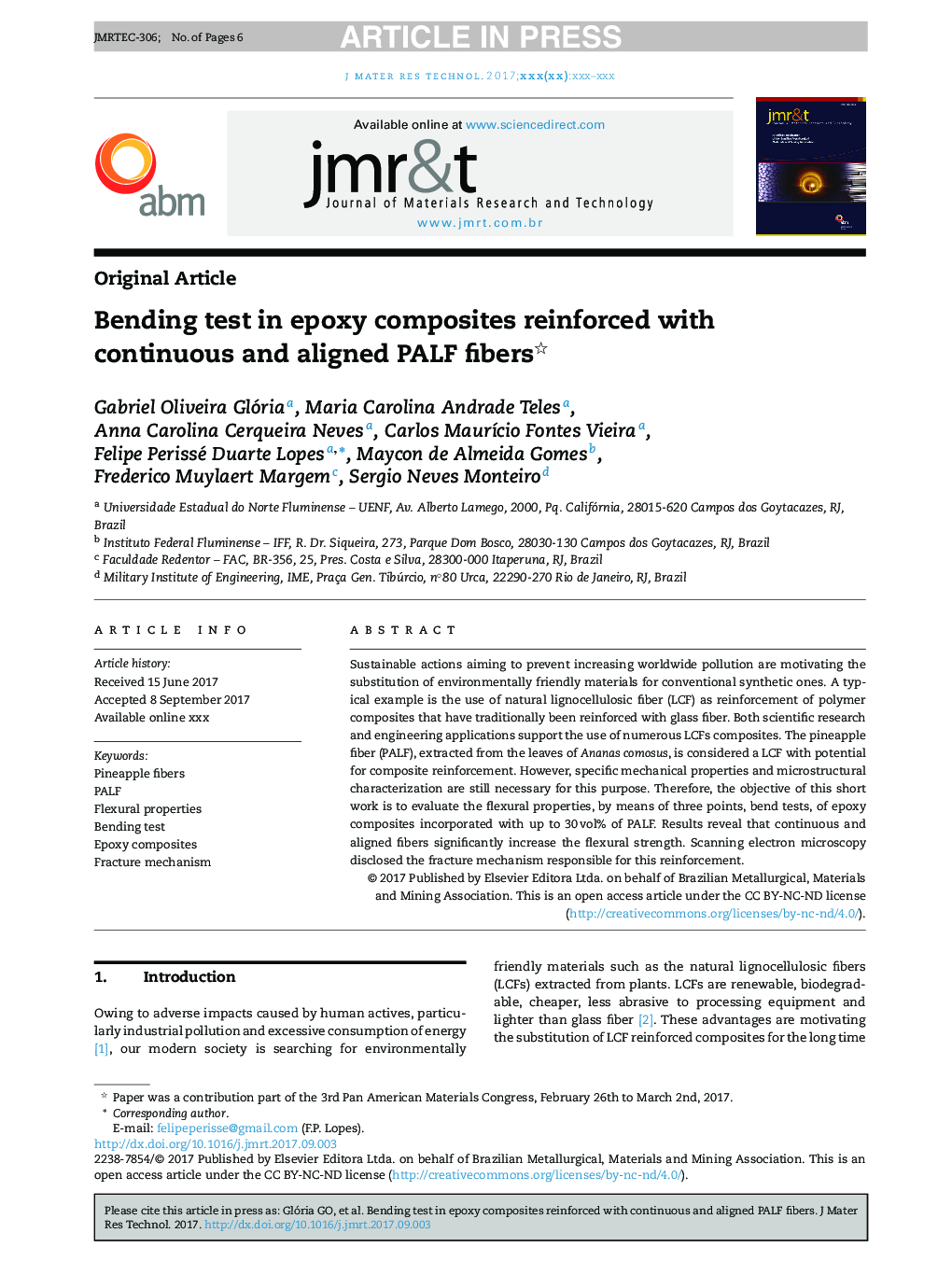| Article ID | Journal | Published Year | Pages | File Type |
|---|---|---|---|---|
| 7899412 | Journal of Materials Research and Technology | 2017 | 6 Pages |
Abstract
Sustainable actions aiming to prevent increasing worldwide pollution are motivating the substitution of environmentally friendly materials for conventional synthetic ones. A typical example is the use of natural lignocellulosic fiber (LCF) as reinforcement of polymer composites that have traditionally been reinforced with glass fiber. Both scientific research and engineering applications support the use of numerous LCFs composites. The pineapple fiber (PALF), extracted from the leaves of Ananas comosus, is considered a LCF with potential for composite reinforcement. However, specific mechanical properties and microstructural characterization are still necessary for this purpose. Therefore, the objective of this short work is to evaluate the flexural properties, by means of three points, bend tests, of epoxy composites incorporated with up to 30Â vol% of PALF. Results reveal that continuous and aligned fibers significantly increase the flexural strength. Scanning electron microscopy disclosed the fracture mechanism responsible for this reinforcement.
Related Topics
Physical Sciences and Engineering
Materials Science
Ceramics and Composites
Authors
Gabriel Oliveira Glória, Maria Carolina Andrade Teles, Anna Carolina Cerqueira Neves, Carlos MaurÃcio Fontes Vieira, Felipe Perissé Duarte Lopes, Maycon de Almeida Gomes, Frederico Muylaert Margem, Sergio Neves Monteiro,
